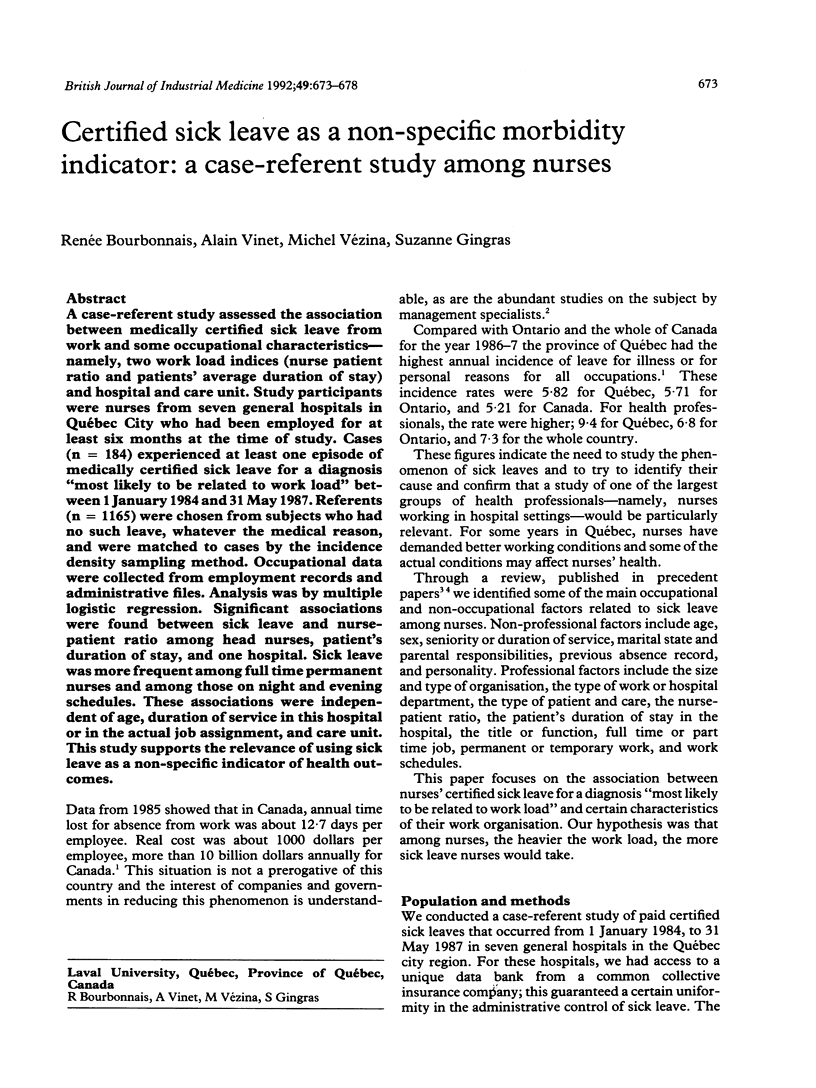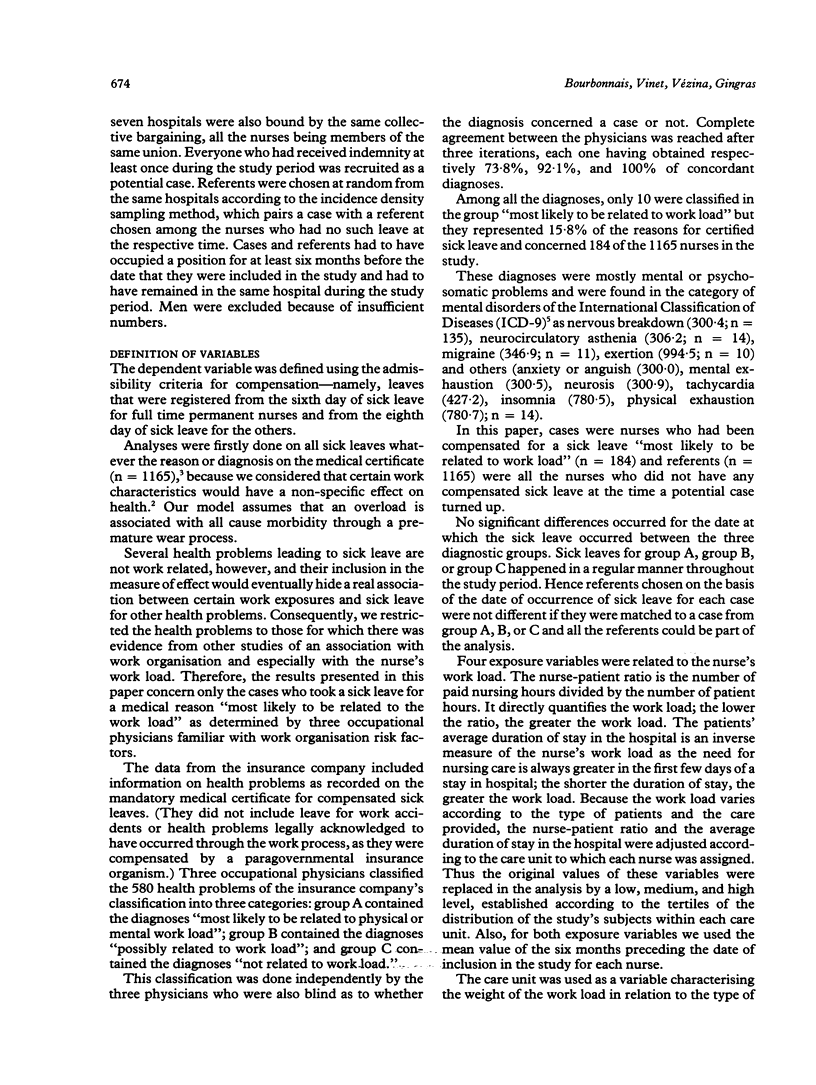Abstract
A case-referent study assessed the association between medically certified sick leave from work and some occupational characteristics--namely, two work load indices (nurse patient ratio and patients' average duration of stay) and hospital and care unit. Study participants were nurses from seven general hospitals in Québec City who had been employed for at least six months at the time of study. Cases (n = 184) experienced at least one episode of medically certified sick leave for a diagnosis "most likely to be related to work load" between 1 January 1984 and 31 May 1987. Referents (n = 1165) were chosen from subjects who had no such leave, whatever the medical reason, and were matched to cases by the incidence density sampling method. Occupational data were collected from employment records and administrative files. Analysis was by multiple logistic regression. Significant associations were found between sick leave and nurse-patient ratio among head nurses, patient's duration of stay, and one hospital. Sick leave was more frequent among full time permanent nurses and among those on night and evening schedules. These associations were independent of age, duration of service in this hospital or in the actual job assignment, and care unit. This study supports the relevance of using sick leave as a non-specific indicator of health out-comes.
Full text
PDF





Selected References
These references are in PubMed. This may not be the complete list of references from this article.
- Bourbonnais R., Lee-Gosselin H., Pérusse M. L'organisation du travail en milieu hospitalier et ses effets sur la santé des infirmières. Sante Ment Que. 1985;10(2):73–85. [PubMed] [Google Scholar]
- Bourbonnais R., Vinet A. L'absence du travail comme indicateur de santé: signification, mesures et conditions d'utilisation. Rev Epidemiol Sante Publique. 1989;37(2):173–182. [PubMed] [Google Scholar]
- Bourbonnais R., Vinet A., Meyer F., Goldberg M. Certified sick leave and work load. A case referent study among nurses. J Occup Med. 1992 Jan;34(1):69–74. [PubMed] [Google Scholar]
- Dewe P. J. Investigating the frequency of nursing stressors: a comparison across wards. Soc Sci Med. 1988;26(3):375–380. doi: 10.1016/0277-9536(88)90403-0. [DOI] [PubMed] [Google Scholar]
- Estryn-Behar M., Kaminski M., Peigne E., Bonnet N., Vaichere E., Gozlan C., Azoulay S., Giorgi M. Stress at work and mental health status among female hospital workers. Br J Ind Med. 1990 Jan;47(1):20–28. doi: 10.1136/oem.47.1.20. [DOI] [PMC free article] [PubMed] [Google Scholar]
- Leppänen R. A., Olkinuora M. A. Psychological stress experienced by health care personnel. Scand J Work Environ Health. 1987 Feb;13(1):1–8. doi: 10.5271/sjweh.2086. [DOI] [PubMed] [Google Scholar]


